News
Q&A with Gordon and Gary Shepherd for Jan Shipps: A Social and Intellectual Portrait May 27 2019
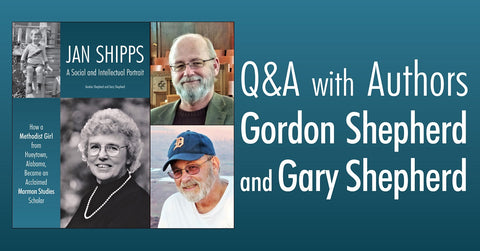
| Download a free sample preview | Order your copy |
Q: For those unfamiliar with Jan Shipps, what can you tell us about her and why she is important within Mormon studies?
A: In the mid-to-late 1970s, Jan Shipps began to emerge as an important new scholarly voice in Mormon history circles. She was not a Latter-day Saint (LDS), and she was a woman claiming the right of place in a field dominated by men. Yet she proved she could more than hold her own with the male scholars who constituted the inner circles of both the LDS-based Mormon History Association and its RLDS counterpart, the John Whitmer Historical Association. Her scholarly work was fresh and insightful, she rapidly ascended to positions of leadership and made meaningful organizational contributions within both groups, and she helped mediate differences between scholarly proponents of these two historically antagonistic camps of Mormonism. These men respected, accepted, and encouraged her. By the early to mid-1980s Jan’s reputation for unbiased and nonpolemical writing and speaking on Mormon topics also earned her the confidence of both the national media (who consulted her constantly for her take on news stories related to Mormons and the LDS Church) and upper echelon authorities of the LDS Church (who gave her unprecedented access to them and their views on the same topics). She was simultaneously instrumental in persuading many prominent religious studies scholars and American Western historians of the significance of Mormonism as a case study in their own disciplines that had previously trivialized or dismissed the serious study of Mormons, past and present. Her 1985 book, Mormonism: The Story of a New Religious Tradition, received widespread critical acclaim and cemented her reputation as an authoritative scholarly interpreter of both Mormon history and contemporary Mormon culture. In succeeding years, her reputation and influence remained strong, and she continued—well into her eighties—as an active scholar, mentor to a new generation of women historians, and as an organizational participant within the expanding field of Mormon studies that she had herself helped to legitimate.
Q: What made you decide to write a book about her?
A: Although the two of us are only marginally connected to Mormon history circles, we had known Jan professionally for a number of years. This connection was due mostly to Jan characteristically reaching out to people like us who demonstrated a manifest interest in the scholarly study of Mormonism from other perspectives (sociology in our case), and we were well aware of her important contributions to the related fields of Mormon history and Mormon studies. Five years ago, she invited us to her home in Bloomington to confer for two days on a then-current project of ours that she found interesting while soliciting our views on a current project of her own. Our natural inclination is to ask a lot of biographical questions in the process of interacting with other people, and we quickly became a lot more familiar with her as a person on this occasion (and on others that subsequently followed). We reflected on what a remarkable transformational story her life presented—a life that merited telling at least in terms of how she had transitioned from unpromising beginnings growing up in Depression-era Alabama, to entering into adulthood as a post-World War II housewife and mother without a college degree, to eventually emerge, in middle age, as a pre-eminent scholar of Mormonism. It didn’t take long for such reflections to crystallize into a conviction that we could, should, and would attempt to tell her story.
Q: Can you briefly explain what kind of analysis this book provides beyond a typical biography?
A: We have not tried to write a thorough, conventional biography that explores every known pertinent fact about our subject in detailing the full arc of her life. We call our project a “social and intellectual portrait,” laying out a basic summary of what we perceive as life-shaping experiences, personal characteristics, role model and mentor relationships, and environmental circumstances—from early childhood through mid-adulthood—that shaped, prepared, and eventually propelled Jo Ann Barnett into improbable prominence as Jan Shipps, the “outsider-insider” Mormon observer par excellence. We also make a detailed argument that Jan’s Mormonism: The Story of a New Religious Tradition merits inclusion with Fawn Brodie’s No Man Knows My History, and Juanita Brooks’s Mountain Meadows Massacre as the three most impactful scholarly books thus far written on Mormon topics. Hand in hand with this argument, we also show how Jan’s deep and extensive participation in professional academic circles—both Mormon and non-Mormon—significantly advanced the stature of Mormon studies as a legitimate and important field of scholarly inquiry. Finally, we suggest how Jan’s own evolving religious beliefs and attitudes regarding contemporary feminist issues have interacted with her understanding and interpretation of Mormonism.
Q: Give us a brief look into Jan Shipps background. When did she decide to start researching and studying Mormonism and what prompted her?
A: Jan arrived in Logan, Utah in the summer of 1960, accompanying her husband, Tony, who had just been hired as the new assistant head librarian at Utah State University. Jan was 30 years old, mother of an 8-year old son, had a number of credits earned at women’s colleges in Alabama and Georgia (but had not completed an undergraduate degree) and knew virtually nothing about Mormons. But she was naturally tolerant and curious about Mormons and immediately began to read as much as she could find about them, including Leonard Arrington’s Great Basin Kingdom (Arrington was then professor of history at USU but on sabbatical at the time). Jan registered for classes at USU to obtain teaching credentials so she could supplement the meager family income. She changed her degree from music to history to facilitate this aim and serendipitously took a historiography course from visiting professor, Everett Cooley (who was temporarily filling in for Arrington). Cooley recognized Jan’s potential as a student and gave her an assignment to research and write about a Mormon topic from primary source materials to which Cooley had access. Jan succeeded brilliantly in this assignment while pursuing a self-directed crash course in readings on Mormon history. When Tony was hired for a new library position the subsequent year at the University of Colorado, Jan opted to enroll in a master’s degree program in history at UC, again with the intention of gaining additional required credentials to become a public-school teacher. Given her recently acquired experience at USU, she chose to write a course paper on a Mormon topic and produced what later became her first published article: “Second Class Saints,” an analysis of Black Mormons. She followed up this paper by expediently writing on another Mormon topic for her master’s thesis, “The Mormons in Politics. 1839–1844.” When Jan was subsequently (and unexpectedly) encouraged by CU history faculty to continue graduate studies as a Ph.D. student, she was by now committed by intellectual passion and commitment (and not just convenience) to write her dissertation on “The Mormons in Politics: The First Hundred Years,” and to continue pursuing a scholarly focus on Mormon topics.
Q: Above, you heralded Jan Shipps’s 1984 book, Mormonism: The Story of a New Religious Tradition, as one of the most significant books in Mormon studies. For readers who are less familiar, can you give a brief description of her book and offer a few reasons for its significance?
A: In spite of Jan’s subtitle, “The Story of a New Religious Tradition,” the story she tells is not a conventionally detailed or comprehensive narrative of Mormon history and the organization of The Church of Jesus Christ of Latter-day Saints. Jan’s approach is to instead understand the rise of nineteenth-century Mormonism using comparative, analytical, and theoretical religious studies methods. While the seven chapters of her book can all be read as separate essays, combined they sustain a coherent thesis about the relatively rare emergence and organizational transformation of a new religious tradition in the context of nineteenth-century American history and religious culture. Jan’s central thematic argument requires that we not only consider early Mormonism in the context of American religious history but that we also see it in broader historical comparison to the rapid rise of Christianity as a new religious tradition from its initial incarnation as a Jewish sect. By new religious tradition, Jan means explicitly that the theological beliefs and associated religious symbols, rituals, and religiously mandated practices diverge so much from the parent religious tradition that they burst the bounds of the old and must be grasped as something fundamentally new and distinctive.
The insights about the emergence and subsequent development of Mormonism that Jan produced began with an analogy to early Christianity. Analogies are heuristic devices that stimulate possible solutions to unresolved problems or debated questions. The debated questions about Mormonism are: What kind of religion is it? Is it Christian or non-Christian? How and why did it emerge and spread so rapidly when and where it did in nineteenth-century America? How did it not only survive furious resistance as a perceived Christian heresy but ultimately flourish to become a rapidly expanding international religion in the twentieth century? And in the process of doing this, what kind of religion did it consequently become for its adherents both at home and abroad? These are the kinds of questions that concern Jan’s analysis of Mormonism and not merely a descriptive, chronological account of its history and most prominent leaders.
In short, Mormonism is not written to be either faith promoting or faith debunking. It is not a conventional history. It is a comparative and analytical treatise that positions Mormonism within larger historical, cultural and social contexts. It commanded the attention and respect of eminent scholars and conferred increased recognition and legitimacy on the scholarly field of Mormon studies.
Q: You mentioned that Jan Shipps became a go-to expert for the national media whenever they covered a Mormon-related topic. How did Jan achieve this status? And how did her national media presence affect her relationship with the leaders of the LDS Church?
Jan not only became deeply involved with “insider” LDS and RLDS scholarly organizations (The Mormon History Association and the John Whitmer Historical Association), she also presented and published her work on Mormonism in a number of nationally prestigious outlets while simultaneously assuming active leadership roles in the professional organizations that sponsored these same scholarly conferences and journals (e.g., The National Historical Society, the Western History Association, the Center for American Studies, and the American Academy of Religion, among others). Prominent participation in these organizations gave national exposure to her scholarly work and advocacy of Mormon studies and garnered the attention of the media at a time that coincided with escalating interest in Mormons and the LDS Church due to such issues as Blacks and the priesthood, the Equal Rights Amendment, the Hoffman bombings, and the rapid growth and increasing influence of the LDS Church and prominent individual Mormons around the world. Given her growing reputation in national scholarly circles, It didn’t take long for the media to discover Jan as a non-Mormon expert on Mormons, who could provide unbiased but authoritative information and analysis on these and many other issues of interest. At the same time, through both local and national network sources, LDS Church officials reciprocally came to appreciate Jan’s unflagging promotion of detached but non-polemical scholarship on Mormon subjects. This appreciation was particularly facilitated through the savvy efforts of LDS Church Director of Press Relations and Public Communications, Jerry Cahill, to arrange Jan’s access to Church leadership as a mutually trusted bridge between them and national news outlets.
Q: How did Jan's Methodist faith evolve through the years that she studied Mormonism? How do you feel her religious tradition affected her writings on Mormonism?
A: Jan grew up as a dutiful, simple believer but a not very pious Methodist. The most important religious principles she acquired from her childhood were tolerance of others’ religious beliefs and the notion that the primary purpose of religion was to help people in need. Her religious tolerance has matured into an active curiosity about diverse religious perspectives and genuine respect for the legitimacy of religious beliefs that are sincerely held in different religious traditions. This outlook came into its maturity as she studied Mormon history, beliefs, and practice—all completely unknown to her at the outset of her academic career. Jan’s detached, analytical, but respectful treatment of Mormonism’s beginnings and development as a new religious tradition was a hallmark of her early, acclaimed work. Ongoing, increased contact with ordinary Mormons, Mormon scholars, and LDS Church leaders have deepened her appreciation of Mormonism as a valid religious tradition. But she is not a convert to Mormonism and remains committed to the organizational expression of her Methodist beginnings. However, Jan’s private religious beliefs are more complicated, diverse, and universal than those proclaimed either by conventional Methodism or Christianity in general. She prays for others because she knows it brings them comfort. But Jan does not pray for herself, because she believes in her own ability to cope with life’s problems and in a just God who knows her heart.
Q: What are you hoping readers will gain from this book?
A: We hope all readers will come to appreciate—as we did in conducting our research—the truly remarkable, utterly unanticipated unfolding of Jan Shipps’s life and career. This is a life that should inspire us all. But it should particularly inspire the aspirations of many young LDS women who struggle to strike a working balance between their deeply felt religious and family commitments and the full development of their intrinsic talents, potential to grow, and ability to see and take advantage of life opportunities on an equal par with men. And we hope readers with a scholarly interest in Mormon studies, particularly younger students and scholars whose awareness and interests have developed since the heydays of Jan’s seminal contributions, will become more appreciative of the foundational role Jan played in promoting Mormon studies as an important field of study.
Gary and Gordon Shepherd
Who is Lot Smith? Forgotten Folk Hero of the American West November 06 2018

WHO IS LOT SMITH?
LOT SMITH is a legendary folk hero of the American West whose adventurous life has been all but lost to the annals of time. Lot arrived in the West with the Mormon Batallion during the Mexican-American War. He remained in California during much the Gold Rush, and was later a participant in many significant Utah events, including the Utah-Mormon War, the Walker War, the rescue of the Willie & Martin Handcart Companies, and even joined the Union Army during the US Civil War. Significantly, Lot Smith was one of the early settlers of the Arizona territory and led the United Order efforts in the Little Colorado River settlements. What follows is a brief sketch of Lot's service in the Mormon Batallion and the experiences that shaped him.
Lot was reared by a hard-working Yankee father and a devoutly religious mother. His mother passed when he was fourteen. At the impressionable age of sixteen, Lot joined the Mormon Battalion in the Mexican-American War as one of its youngest members. His father passed before he returned to his family. Consequently, his experiences in the Mormon Battalion shaped his life significantly. The struggles of this heroic infantry march of two-thousand miles across the country embedded within him several valuable characteristics.

Lot Smith came to value the comfort of clothing and shoes in the absence thereof. As the battalion march continued, his clothing and shoes wore out. He had only a ragged shirt and an Indian blanket wrapped around his torso for pants. At the death of one of the soldiers, he gratefully inherited the man’s pants. His feet were shod with rawhide cut from the hocks of an ox. Ever after, he never took shoes for granted. It appears that he may have developed an obsession for them. Soon after his arrival in Utah Territory, he was known to have bought himself a pair of shoes that was outlandishly too large. He said that he wanted to get his money’s worth! Years later, he bought thirty pairs of shoes at a gentile shoe shop. When he saw the astonishment of the shopkeeper, he said, “If these give good service, I’ll be back and buy shoes for the rest of my family!” He frequently carried an extra pair of shoes. In at least two recorded instances, he gave an extra pair of shoes to grateful men who were in desperate need. He knew how feet with no shoes felt—sore, bruised and cut.

Smith developed endurance during the Mormon Battalion march. He carried a shoulder load of paraphernalia, walked as many as twenty-five miles or more each day—sometimes dragging mules through the heavy sand. There was no stopping—and absolutely no pampering. When the going got rough, he had to keep going. He suffered extreme heat and freezing nights on the deserts. Through all of these challenges, he learned to laugh at the hardships and to maintain a happy optimistic view of life. He emerged from the Mormon Battalion as a young man who knew he could do hard things.
It is not known how skilled Smith became with a gun during his battalion march, but during his later years in Arizona, he was known to be an expert marksman who could shoot accurately even from the hip. Every morning he took a practice shot. Navajos and Hopis would come from miles around to challenge him. He gained a reputation of the most feared gunman in Arizona.
Smith faced many life-threatening ordeals throughout the rest of his life. Many different kinds of hardships would test his endurance. He faced them with courage, a trust in God, and an upbeat attitude. His example inspired those who followed him. As a significant and beloved military leader, he knew how to succor those under his command. One who served with him in the military said, “We loved him because he loved us first.”
Lot Smith learned many valuable life lessons on the Mormon Battalion march that served him well. Yes, he rid his table of hot pepper—and he should have done away with something else hot—his temper!
 Talana S. Hooper is a native of Arizona’s Gila Valley. She attended both Eastern Arizona College and Arizona State University. She compiled and edited A Century in Central, 1883–1983 and has published numerous family histories. She and her husband Steve have six children and twenty-six grandchildren.
Talana S. Hooper is a native of Arizona’s Gila Valley. She attended both Eastern Arizona College and Arizona State University. She compiled and edited A Century in Central, 1883–1983 and has published numerous family histories. She and her husband Steve have six children and twenty-six grandchildren.

Lot Smith recounts the Mormon frontiersman’s adventures in the Mormon Battalion, the hazardous rescue of the Willie and Martin handcart companies, the Utah War, and the Mormon colonization of the Arizona Territory. True stories of tense relations with the Navajo and Hopi tribes, Mormon flight into Mexico during the US government's anti-polygamy crusades, narrow escapes from bandits and law enforcers, and even Western-style shoot-outs place Lot Smith: Mormon Pioneer and American Frontiersman into both Western Americana literature and Mormon biographical history.
Q&A with Talana S. Hooper for Lot Smith: Mormon Pioneer and American Frontiersman November 01 2018

| Download a free preview | Order your copy |
Q: Give us some background into this book. How did it come together?
A: My grandfather James M. "Jim" Smith was the youngest of Lot Smith's fifty-two children. Since Lot Smith was killed by a renegade Navajo six months before my grandfather's birth, my Grandpa James sought his entire life to learn all he could about the father he never knew. He soon discovered that his father had lived a life which generated myths and legends. He obtained many firsthand accounts which were most often tinged with admiration and love—yet not all were complimentary. Jim Smith's oldest son, my father Omer, recorded the stories and enlisted the help of my mother Carmen to more completely research Lot Smith's history in libraries around the country. When Omer unexpectedly passed, Carmen continued to research, interview, and compile for another thirty years. However, by her mid-nineties, her eyesight had failed enough so that even with her magnifying glass she could no longer see her computer screen well enough to continue. I knew that Lot Smith's life story was too compelling and valuable to be lost. With her blessing and help (while she was still able), I began working to bring the biography together for publication.
Q: For readers who are unfamiliar with Lot Smith, can you give us a basic background of who he was?
A: Lot Smith, a man with a fiery red beard and a temper to match it, experienced firsthand many of the significant events in the early history of The Church of Jesus Christ of Latter-day Saints. His life was one adventure after another. He joined the Mormon Battalion at the age of sixteen and participated in the California Gold Rush. The life lessons he learned during the Mormon Battalion prepared him for a life of service—many times grueling—for the Church and his fellowmen.
Smith continued his military career. His reputation of fearlessness became widely known as a member of the Minute Men Life Guards—the cavalry that defended the Latter-day Saints in the Rockies from Indians. He was a captain of the Life Guards who rescued the Willie and Martin Handcart Companies. Major Smith served a critical role in defending his fellow Saints from what seemed certain annihilation by the US Army by burning their supplies and wagons in the Utah War. For that act, he was hailed as a hero by the Saints, but indicted for treason in the US courts. After Smith fought in the Walker War, he was appointed as a captain in the US Army to guard telegraph lines and mail routes during the American Civil War. During that service, he and his men endured a harrowing, life-threatening chase after unknown Indians who had stolen two hundred horses. Readers will enjoy several interesting trips with Brigham Young when Smith served as an escort guard. Smith lastly served as Brigadier General in the Black Hawk War and then served a mission in the British Isles.
In 1876 Brigham Young called Smith to lead colonization in the Arizona Territory. Young charged Smith to establish the United Order and to befriend the Indian tribes. Both these directives brought more adventures as they struggled to secure a mere livelihood. Smith served as Arizona's first stake president, and his Sunset United Order provided a way station for others colonizing in New Mexico, Arizona, and Mexico. Smith also helped lead Church colonization in Mexico—another ordeal.
Smith was one of the most feared gunmen in Arizona. He several times drew his gun on men meaning harm but pulled the trigger only once. Besides defending his rights as a stockman, he vowed he would never be arrested for polygamy and narrowly escaped arrest many times. His untimely death came from a shot in the back by a renegade Navajo.
Q: Can you give us a scene from Lot Smith's life that you found particularly interesting?
A: It is difficult to choose just one scene from Lot Smith's life to share. I considered the incident when one of his men was accidentally shot during the Utah War or the rescue of the Martin Handcart Company. I remember the death-defying chase up the Snake River in the Civil War. And then I consider the time when he had a shootout with a man hired to kill him. All are incredible events! And yet, I choose simple episodes Smith shared with his sons.
While Smith lived in Arizona, the federal marshals increased their efforts to arrest any polygamists. Smith had four wives in Arizona, so he was a target. He was always on the alert and evaded arrest many times by riding a fast horse and carrying a fast gun. One time when Lot and his sons were shucking corn in the field, a marshal appeared some distance away. Smith told his boys to shock him up in the corn. When the officer rode up, the boys greeted him cordially. The officer never did figure out how Smith escaped the area!
On another occasion, Smith was traveling with his son Al in a wagon. Lot looked up the road to see a man on horseback and said to Al that it looked like a U.S. Marshal. Since Lot was convinced that no deceit could enter the Kingdom of God, he wanted all his posterity to be honest and truthful at all times—even in the face of danger. So when he saw the marshal, he told his son to stay in the wagon and not to lie, or he'd skin him alive. Lot took his gun and hid behind a bush. The officer approached and asked Al if he were Lot Smith's son. Al replied that he was. Then the officer asked where his father was. Al replied, "Right behind that bush beside you." The officer didn't look; he feared Smith's gun. He merely said, "Well, you tell him that I passed the time of day with him," and said good-bye.
Q: There are a lot of myths and legends that surround Lot Smith. Can you talk about a couple and set the record straight?
A: Several preposterous stories have been attributed to Lot Smith—probably because of his reputation as a rough character with a strong personality, and an expert gunman which caused people to fear him. One widespread myth was that he was involved in the Mountain Meadows Massacre. How could Smith, the hero of the Utah War, be in Wyoming and southern Utah at the same time? Yet the myth persisted, and newspapers printed at his death that he was involved in the massacre.
One of the most oft-repeated myths of Lot Smith was that he branded his wives. It was so widely believed that at the death of his wife Jane in 1912, people still speculated if she had been branded.
The myth followed Smith to Arizona. Children of his last wife, Diantha, were told that their mother had been branded. The real story of Smith "branding his wife" involved his second wife Jane after his first wife Lydia had left. While Lot and two of his friends were branding near his home in Farmington, Jane was preparing dinner for her husband and the guests. Jane needed eggs. She went out and spied some eggs in the manger where she couldn't reach without entering the corral. Jane knew that Lot's stallion chased and bit anyone but Lot, but the stallion seemed to be dozing in the far corner of the corral. She reasoned that she could sneak in unnoticed. However, the stallion was not as drowsy as she has assumed. He jerked up his head, shrieked, and charged Jane. Without dropping his branding iron, Lot jumped and ran between his wife and the stallion. When she ducked to go under the fence, he pushed her through with the branding iron. The men at the branding fire watched as Jane twisted to check her nice skirt that she wore for company. The branding iron had cooled enough that it didn't even scorch it. One of the men laughed and said, "That's one that won't get away from you; she's branded!"
Lot, who loved to entertain and enjoyed a sense of humor, was partially responsible for starting the myth. In church meetings after this incident, he arose to bear his sincere testimony. Along with recounting his blessings, he was heard to say on more than one occasion, "And anything I own, I brand—including my wife!"
Q: What do you hope readers will take away from reading this book?
A: Most of all, I want readers of the Lot Smith biography to enjoy the incredible and fascinating life of Lot Smith. His life was one thrilling adventure after another! Since his life entwined significant events in the early history of The Church of Jesus Christ of Latter-day Saints, I hope that readers get an up-close perspective of some of these events.
I hope readers learn through Lot's experiences that trials and hard circumstances can refine us. When Lot was in the Mormon Battalion, he experienced periods of no food, no water, no shoes, and scanty clothing. His compassion for others in similar situations was born. He was always generous to the poor and could never turn away anyone who was hungry even when food was scarce. It seems he often carried an extra pair of shoes to give away freely.
Lot's strong leadership in the colonization of the destitute Arizona Territory in the United Order was phenomenal. Through hard work and wise leadership, the colonists avoided starvation and established homes. I want readers to more fully realize and understand some of the sacrifices our forefathers made to settle the frontier land for future generations.
| Download a free preview | Order your copy |
Twelve Days of Kofford 2017 November 21 2017
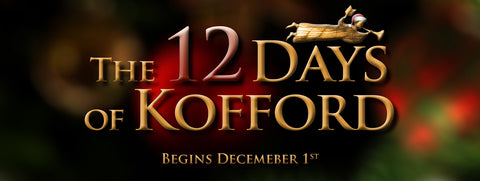
Greg Kofford Books is once again pleased to offer twelve days of discounted holiday shopping from our website!
HERE IS HOW IT WORKS: Every morning from Dec 1th through the 12th, we will be posting a DISCOUNT CODE on our Facebook or Twitter pages. Use this discount code on the corresponding day to receive 30% off select titles. The final day will be an e-book flash sale on Amazon.com.
To help you plan, here are the dates, titles, and sale prices we will be offering beginning Dec 1st. These sales are limited to available inventory. You must follow our Facebook or Twitter pages to get the discount code. Orders over $50 qualify for free shipping. Customers in the Wasatch Front area are welcome to pick orders up directly from our office in Sandy, UT.
Day 1 — Brant Gardner collection
 |
Second Witness, Vol 1: First Nephi $39.95 hardcover |
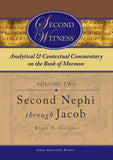 |
Second Witness, Vol 2: Second Nephi through Jacob $39.95 hardcover |
 |
Second Witness, Vol 3: Enos through Mosiah $39.95 hardcover |
 |
Second Witness, Vol 4: Alma $49.95 hardcover |
 |
Second Witness, Vol 5: Helaman through Nephi $39.95 hardcover |
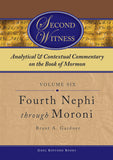 |
Second Witness, Vol 6: Fourth Nephi through Moroni $39.95 hardcover |
 |
The Gift and the Power: Translating the Book of Mormon $34.95 paperback |
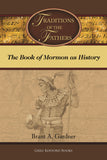 |
Traditions of the Fathers: The Book of Mormon as History $34.95 paperback |
 |
The Garden of Enid: Adventures of a Weird Mormon Girl $22.95 paperback |
 |
The Garden of Enid: Adventures of a Weird Mormon Girl $22.95 paperback |
Day 3 — The Mormon Image in Literature
 |
The Mormoness; Or, The Trials of Mary Maverick: $12.95 paperback |
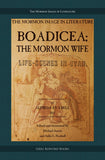 |
Boadicea; the Mormon Wife: Life Scens in Utah $15.95 paperback |
 |
Dime Novel Mormons $22.95 paperback |
 |
Women at Church: Magnifying LDS Women's Local Impact $21.95 paperback |
 |
Mormon Women Have Their Say: Essays from the Claremont Oral History Collection $31.95 paperback |
 |
Voices for Equality: Ordain Women and Resurgent Mormon Feminism $32.95 paperback |
 |
Joseph Smith's Polygamy, Vol 1: History $34.95 paperback |
 |
Joseph Smith's Polygamy, Vol 2: History $34.95 paperback |
 |
Joseph Smith's Polygamy, Vol 3: Theology $25.95 paperback |
 |
Joseph Smith's Polygamy: Toward a Better Understanding $19.95 paperback |
 |
Modern Polygamy and Mormon Fundamentalism: The Generations after the Manifesto $31.95 paperback |
 |
Mormon Polygamous Families: Life in the Principle $24.95 paperback |
 |
Prisoner for Polygamy: The Memoirs and Letters of Rudger Clawson at the Utah Territorial Penitentiary, 1884–87 $29.95 paperback |
 |
Who Are the Children of Lehi? DNA and the Book of Mormon $15.95 paperback |
 |
“Let the Earth Bring Forth”: Evolution and Scripture $15.95 paperback |
 |
Mormonism and Evolution: The Authoritative LDS Statements $15.95 paperback |
 |
Parallels and Convergences: Mormon Thought and Engineering Vision $24.95 paperback |
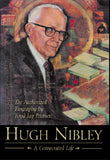 |
Hugh Nibley: A Consecrated Life $32.95 hardcover |
 |
“Swell Suffering”: A Biography of Maurine Whipple $31.95 paperback |
 |
William B. Smith: In the Shadow of a Prophet $39.95 paperback |
 |
LDS Biographical Encyclopedia, 4 Vols $259.95 paperback |
 |
The Man Behind the Discourse: A Biography of King Follett $29.95 paperback |
 |
Liberal Soul: Applying the Gospel of Jesus Christ in Politics $22.95 paperback |
 |
A Different God? Mitt Romney, the Religious Right, and the Mormon Question $24.95 paperback |
 |
Common Ground—Different Opinions: Latter-day Saints and Contemporary Issues $31.95 paperback |
 |
Even Unto Bloodshed: An LDS Perspective on War $29.95 paperback |
 |
War & Peace in Our Time: Mormon Perspectives $29.95 paperback |
 |
The End of the World, Plan B: A Guide for the Future $13.95 paperback |
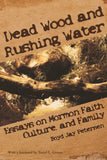 |
Dead Wood and Rushing Water: Essays on Mormon Faith, Culture, and Family $22.95 paperback |
 |
Mr. Mustard Plaster and Other Mormon Essays $20.95 paperback |
 |
Writing Ourselves: Essays on Creativity, Craft, and Mormonism $18.95 paperback |
 |
On the Road with Joseph Smith: An Author's Diary $14.95 paperback |
 |
Hearken O Ye People: The Historical Setting of Joseph Smith's Ohio Revelations $34.95 hardcover |
 |
Fire and Sword: A History of the Latter-day Saints in Northern Missouri, 1836–39 $36.95 hardcover |
 |
A House for the Most High: The Story of the Original Nauvoo Temple $29.95 paperback |
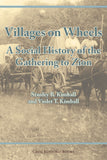 |
Villages on Wheels: A Social History of the Gathering to Zion $24.95 paperback |
 |
Mormonism in Transition: A History of the Latter-day Saints, 1890–1930, 3rd ed. $31.95 paperback |
Day 11 — International Mormonism
 |
Tiki and Temple: The Mormon Mission in New Zealans, 1854–1958 $29.95 paperback |
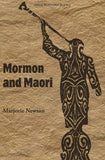 |
Mormon and Maori $24.95 paperback |
 |
The Trek East: Mormonism Meets Japan, 1901–1968 $39.95 paperback |
 |
From Above and Below: The Mormon Embrace of Revolution, 1840–1940 $34.95 paperback |
 |
The History of the Mormons in Argentina $24.95 paperback |
 |
For the Cause of Righteousness: A Global History of Blacks and Mormonism, 1830–2013 $32.95 paperback |
On the twelfth day of Kofford: $1.99 flash sale on Kindle e-books! December 12 2016

On the twelfth day of Kofford, fill your digital stockings with our HUGE e-book promotion. Today only, each of the following titles are only $1.99 on Kindle! PLUS, to help you prepare for the upcoming D&C year in Gospel Doctrine class, we are offering B. H. Robert's classic six-volume A Comprehensive History of the Church on Kindle for only $3.99!
This flash sale ends at midnight tonight (Dec. 12th)
On the ninth day of Kofford: 30% off biography titles! December 09 2016

Biography titles are 30% off December 9th. These special prices are only available for one day, so don't wait!
Orders over $50 qualify for free shipping. Also, local Utah customers can opt to pick up their order directly from our office in Sandy (select this option under the shipping menu).
For more information about the Twelve Days of Kofford holiday sales, click here.
 |
Hugh Nibley: A Consecrated Life Retail: $32.95 Best Biography Award, Mormon History Association |
 |
“Swell Suffering”: A Biography of Maurine Whipple Retail: $31.95 Best Biography Award, Mormon History Association |
 |
William B. Smith: In the Shadow of a Prophet Retail: $39.95 Best Biography Award, John Whitmer Historical Association |
 |
The Man Behind the Discourse: A Biography of King Follett Retail: $29.95 |
Twelve Days of Kofford Christmas Sale 2016 November 30 2016

MERRY CHRISTMAS FROM GREG KOFFORD BOOKS
Greg Kofford Books is pleased to announce our annual holiday sale on select popular titles beginning December 1st – December 12th.
Here's how it works: at the stroke of midnight each day, a new blog post will go live on our website listing that day's special offerings along with a discount code that you can enter at check-out to get the holiday price. It's that simple. We will also be posting the daily offering and discount code on our Facebook page at 7am.
*Orders over $50 qualify for free shipping (continental U.S. customers only). Local Utah customers can stop by our office in Sandy to pick up their orders as well. Holiday inventory on some titles may be limited, so be sure to take advantage of the daily sale early.*
To help you plan in advance, here are our scheduled sales:
Day 1 — Brant Gardner titles
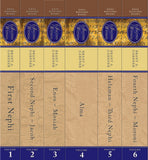 |
Second Witness: Analytical & Contextual Commentary on the Book of Mormon series
|
 |
The Gift and Power: Translating the Book of Mormon |
 |
Traditions of the Fathers: The Book of Mormon as History Best Religious Non-fiction Award, Association for Mormon Letters |
Day 2 — Adam Miller titles (essays in Mormon theology)
 |
Rube Goldberg Machines: Essays in Mormon Theology Retail $18.95 |
 |
Future Mormon: Essays in Mormon Theology Retail: $18.95 |
Day 3 — Personal Essays
 |
Dead Wood and Rushing Water: Essays on Mormon Faith, Culture, and Family Retail: $22.95 |
 |
Mr. Mustard Plaster and Other Mormon Essays by Mary Lithgoe Bradford Retail: $20.95 Sale price: $14.67 |
 |
Writing Ourselves: Essays on Creativity, Craft, and Mormonism Retail: $18.95 |
Day 4 — Blake T. Ostler titles
 |
Exploring Mormon Thought series by Blake T. Ostler 30% off each title |
 |
Fire on the Horizon: A Meditation on the Endowment and Love of Atonement Retail: $17.95 |
Day 5 — Contemporary Studies in Scripture
 |
Authoring the Old Testament: Genesis — Deuteronomy Retail: $26.95 |
 |
Re-reading Job: Understanding the Ancient World's Greatest Poem Retail: $20.95 |
 |
Search, Ponder, and Pray: A Guide to the Gospels Retail: $27.95 |
 |
Beholding the Tree of Life: A Rabbinic Approach to the Book of Mormon Retail: $21.95 |
 |
The Vision of All: Twenty-five Lectures on Isaiah in Nephi's Record Retail: $25.95 |
Day 6 — International Mormonism
 |
The Trek East: Mormonism Meets Japan, 1901–1968 Retail: $39.95 |
 |
Mormon and Maori Retail: $24.95 Best International Book Award, Mormon History Association |
 |
Tiki and Temple: The Mormon Mission in New Zealand, 1854–1958 Retail: $29.95 Best International Book Award, Mormon History Association |
 |
For the Cause of Righteousness: A Global History of Blacks and Mormonism, 1830–2013 Retail: $32.95 Best Book Award, Mormon History Association |
 |
The History of the Mormons in Argentina Retail: $24.95 |
 |
From Above and Below: The Mormon Embrace of Revolution, 1840 – 1940 Retail: $34.95 Best International Book Award, Mormon History Association |
Day 7 — Polygamy titles
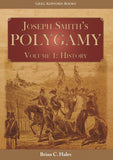 |
Joseph Smith's Polygamy: History and Theology Now in paperback! 30% off each title |
 |
Joseph Smith's Polygamy: Toward a Better Understanding Retail: $19.95 |
 |
Modern Polygamy and Mormon Fundamentalism: The Generations after the Manifesto Retail: $31.95 Best Book Award, John Whitmer Historical Association |
 |
Mormon Polygamous Families: Life in the Principle Retail: $24.95 |
 |
Prisoner for Polygamy: The Memoirs and Letters of Rudger Clawson at the Utah Territorial Penitentiary, 1884–87 Retail: $29.95 |
Day 8 — Contemporary Issues
 |
Women at Church: Magnifying LDS Women's Local Impact Retail: $21.95 |
 |
Common Ground—Different Opinions: Latter-day Saints and Contemporary Issues Retail: $31.95 |
 |
The Liberal Soul: Applying the Gospel of Jesus Christ in Politics Retail: $22.95 |
 |
Voices for Equality: Ordain Women and Resurgent Mormon Feminism Retail: $32.95 |
Day 9 — Biography
 |
Hugh Nibley: A Consecrated Life Retail: $32.95 Best Biography Award, Mormon History Association |
 |
“Swell Suffering”: A Biography of Maurine Whipple Retail: $31.95 Best Biography Award, Mormon History Association |
 |
William B. Smith: In the Shadow of a Prophet Retail: $39.95 Best Biography Award, John Whitmer Historical Association |
 |
The Man Behind the Discourse: A Biography of King Follett Retail: $29.95 |
Day 10 — War and Peace
 |
War & Peace in Our Time: Mormon Perspectives Retail: $29.95 |
 |
Even unto Bloodshed: An LDS Perspective on War Retail: $29.95 |
 |
The End of the World, Plan B: A Guide for the Future Retail: $13.95 |
 |
Saints of Valor: Mormon Medal of Honor Recipients, Updated 2nd Edition Retail: $31.95 |
Day 11 — Mormon Image in Literature
 |
The Mormoness; Or, The Trials Of Mary Maverick: A Narrative Of Real Events Retail: $12.95 |
 |
Boadicea; the Mormon Wife: Life Scenes in Utah Retail: $15.95 |
Day 12 — Ebook Flash Sale — $1.99 for select titles
To be announced. Stay tuned!
Year in Review and the Year Ahead December 29 2015
2015 was another amazing year for Greg Kofford Books! Here is a recap of the year and a look ahead to what is coming in 2016 and beyond.
Award-winning Publications
Several Kofford titles won awards from the Mormon History Association and the Association for Mormon Letters in 2015:
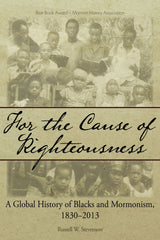 |
MHA Best Book Award For the Cause of Righteousness: A Global History of Blacks and Mormonism, 1830-2013 “Invaluable as a historical resource.” — Terryl L. Givens, author of Parley P. |
 |
MHA Best International Book Award Mormon and Maori “Unflinchingly honest yet unfailingly compassionate.” — Grant Underwood, |
 |
AML Religious Non-Fiction Award Re-reading Job: Understanding the Ancient World's Greatest Poem “A new gold standard for Mormon writings.” — Julie M. Smith, author, Search, |
All 2015 Titles
Here are all of the great titles that Greg Kofford Books published this past year:
 |
Mr. Mustard Plaster and Other Mormon Essays “Vibrant portraits of a kind and loving soul.” — Boyd J. Peterson, author of |
 |
Perspectives on Mormon Theology: Scriptural Theology Each essay takes up the relatively un-self-conscious work of reading a |
 |
Joseph Smith's Polygamy: Toward a Better Understanding “It is a book that will be read and discussed for years to come.” — Robert L. |
 |
Even Unto Bloodshed: An LDS Perspective on War “Indispensable for all future Mormon discussions of the subject.” — Daniel C. |
 |
William B. Smith: In the Shadow of a Prophet “Walker’s biography will become essential reading.” — Mark Staker, author of |
 |
Voices for Equality: Ordain Women and Resurgent Mormon Feminism “Timely, incisive, important.” — Joanna Brooks, co-editor of Mormon |
 |
Traditions of the Fathers: The Book of Mormon as History “Illuminating, prismatic views of the Book of Mormon.” — Mark Alan Wright, |
Looking Ahead at 2016 and Beyond
Here are a few eagerly-anticipated titles currently scheduled for the first part of 2016 and a look at what is in the works for the future:
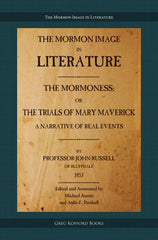 |
The Mormon Image in Literature Series The Mormoness; Or, The Trials Of Mary Maverick: A Narrative Of Real Events Published in 1853, the first American novel about the Mormons is also one of |
 |
The End of the World, Plan B: A Guide for the Future Environmental decline, political gridlock, war and rumors of war, decadence, |
Also forthcoming...
More volumes are in the works for our The Mormon Image in Literature, Contemporary Studies in Scripture, and Perspectives on Mormon Theology series.
Saints, Slaves, and Blacks by Newell G. Bringhurst, revised and updated
Lot Smith: Utah Hero, Arizona Colonizer by Carmen Smith and Talana Hooper
The Trek East: Mormonism Meets Japan, 1901-1968 by Shinji Takagi
Science the Key to Theology by Steven L. Peck
And much, much more...
Thank you for making 2015 exceptional and we are excited about 2016!
Greg Kofford Books Award-Winning Titles June 12 2015
Since its first publication in 2001, Greg Kofford Books has established a reputation as a publisher of consistently award-winning titles in Mormon history and literature. Check out this comprehensive list of each of our books that has received an award:

2015 Best Book Award, Mormon History Association:For the Cause of Righteousness: A Global History of Blacks and Mormonism, 1830-2013, by Russell Stevenson. 
2015 Best International Book Award, Mormon History Association: Mormon and Maori, by Marjorie Newton.
2014 Best Religious Non-fiction Award, Association for Mormon Letters: Re-reading Job: Understanding the Ancient World's Greatest Poem, by Michael Austin. 
2014 Best International Book Award, Mormon History Association: From Above and Below: The Mormon Embrace of Revolution, 1840-1940, by Craig Livingston.
2013 Best International Book Award, Mormon History Association: Tiki and Temple: The Mormon Mission in New Zealand, 1854-1958, by Marjorie Newton. 
2012 Best Biography Award, Mormon History Association: Swell Suffering: A Biography of Maureen Whipple, by Veda Tebbs Hale.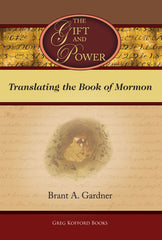
2011 Best Criticism Award, Association for Mormon Letters: The Gift and Power: Translating the Book of Mormon, by Brant Gardner. 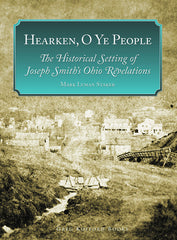
2011 Best Book Awards, Mormon History Association and John Whitmer Historical Association: Hearken O Ye People: The Historical Setting of Joseph Smith's Ohio Revelations, by Mark Staker. 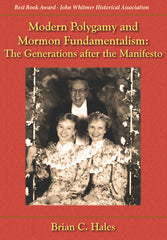
2007 Best Book Award, John Whitmer Historical Association: Modern Polygamy and Mormon Fundamentalism: The Generations after the Manifesto, by Brian Hales. 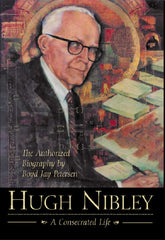
2003 Best Biography Award, Mormon History Association: Hugh Nibley: A Consecrated Life, by Boyd Petersen.



